Colors (3) - Palafitos in Castro | 色彩缤纷的吊脚屋

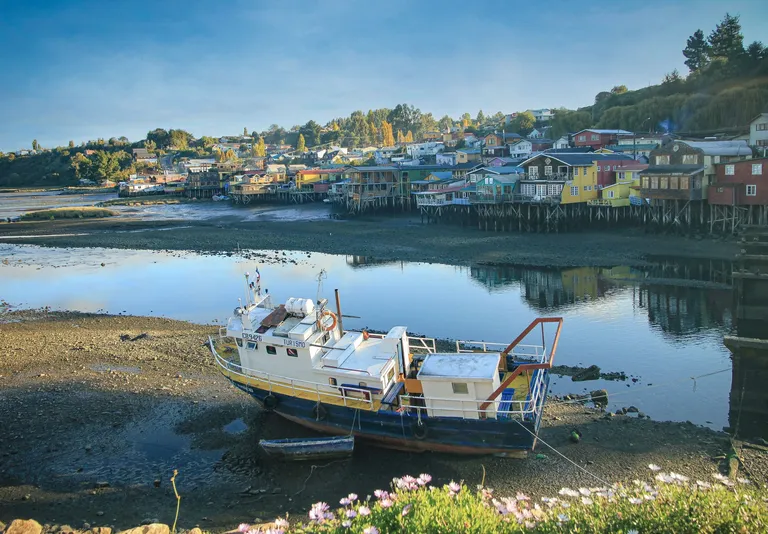
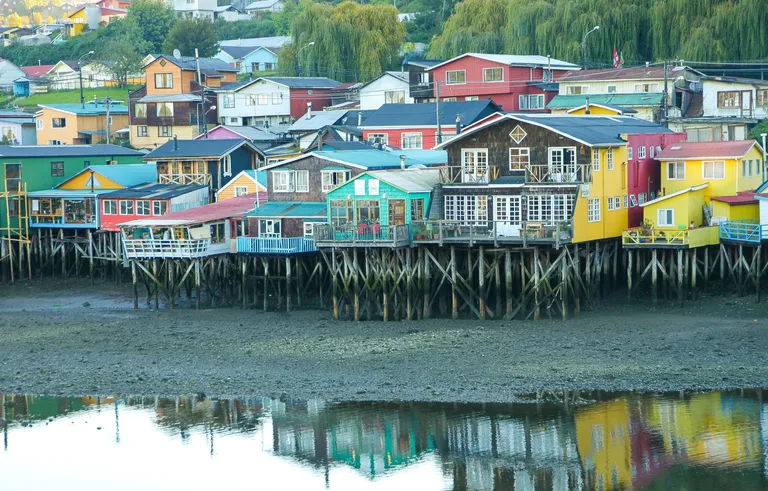
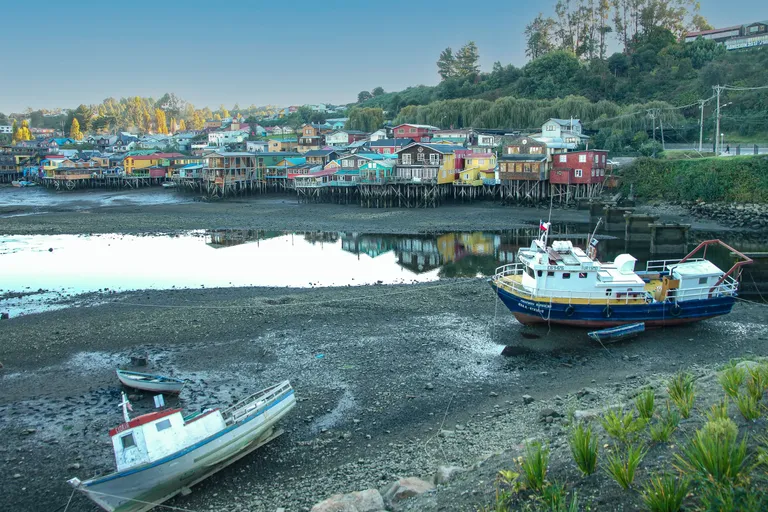
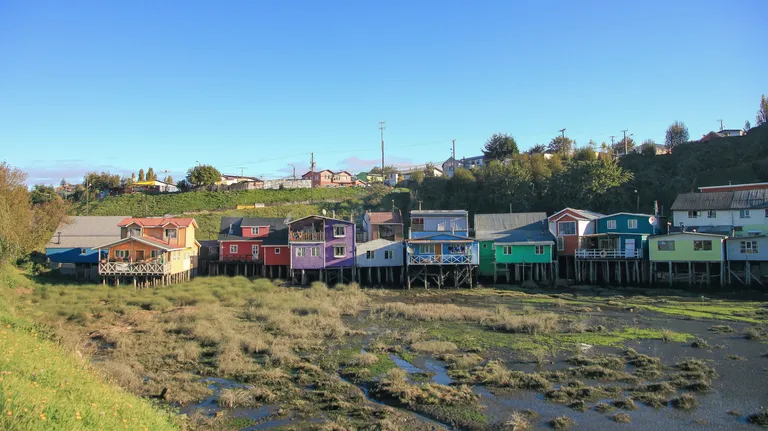
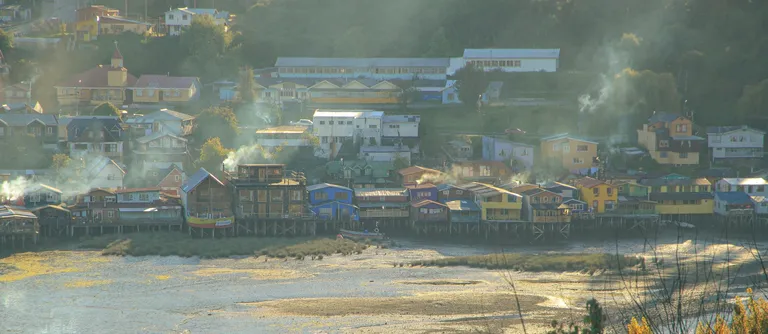

The Deranged Photography Contest has been back for three weeks, and this time it's on Liketu. Each week, there is a theme, and the details for this week's contest can be found here. Feel free to join in the fun as well!
This week's theme is World of Color. I entered a rainbow-colored staircase in the same contest about three years ago, and today I'm going to share some photos of Castro's colorful stilt houses. Castro is located in southern Chile on the east coast of Chiloé Island. I visited Chiloé five years ago after a business trip in the nearby region and was impressed by the amazing wooden architecture throughout the island.
This is the main town on the island, and it is also where the majority of the stilt houses are located. The colorful wooden houses, known as palafitos, are dwellings raised on stilts or piles over water or soil.
Castro, one of Chile's oldest towns, was founded by the Spanish in 1576. It was destroyed by an earthquake in 1837 and later rebuilt. Fortunately, we can still see these traditional palafitos today, having survived natural disasters such as earthquakes and tsunamis, as well as modern architectural changes.
These historic structures were typical of Chiloé in the 19th century. The fishing industry was rapidly expanding at that time when fishermen lived by the water and moored boats next to their homes. Many of the houses are still inhabited by local fishermen, while some have been converted into cafes, hotels, and restaurants. In one of them, I had some delicious kuchen and coffee while admiring the beautiful waterfront view.
You can see these colorful stilt houses in three areas of the town: Pedro Montt to the north of the port, Pedro Aguirre Cerda to the south of the port, and the Gamboa district in the town's western part, by the bay of Fiordo de Castro. I took most photos here from the third area, and some of them are from further points. The palafitos run along the waterfront for about two kilometers, from the port to the Gamboa River bridge.
The houses are made of local wood such as cypress, luma and larch, and are painted in bright colors. One of the houses' fronts is facing the canal with a terrace, and the other is towards the street connected by a bridge.
It was nearing sunset, and the gentle light rays were illuminating the world of colors, mixed with the steam and smoke from locals' kitchens... a truly unforgettable scene. A few colorful boats can also be seen on the black gritty shore. According to the dark marks on the house stilts, the water would cover the middle section during high tide.
这周Liketu的摄影主题是"色彩世界",我就来分享一些卡斯特罗的彩色吊脚屋的照片。卡斯特罗位于智利南部奇洛埃岛的东海岸,是岛上的主要城镇,也是大部分吊脚屋的所在地。这些五颜六色的木制房屋被称为palafitos,是在水上用木桩搭建的住宅。
卡斯特罗是智利最古老的城镇之一,由西班牙人在1576年建立。它在1837年被一场地震摧毁,后来又被重建。这些传统的palafitos是19世纪奇洛埃岛上的典型建筑。当时捕鱼业迅速发展,渔民们逐水而居,把船泊在房子旁边。现在的许多吊脚屋仍是当地渔民居住,有些被改造成咖啡馆、酒店和餐馆。我在其中一家点了咖啡和点心,一边欣赏着这多姿多彩的水滨风貌。
卡斯特罗的三个地区都可以看到这些缤纷的吊脚屋,分别是港口以北的Pedro Montt,港口以南的Pedro Aguirre Cerda,还有西部的Gamboa区。我这篇里的大部分照片就是在Gamboa区拍的,这些鲜艳的木头房子沿河岸而建,大约延续两公里,从港口一直到Gamboa河桥。
当时已接近日落时分,柔和的光线照亮了这个色彩斑斓的世界,木屋的居民们在忙着做晚饭,房子里冒出一缕缕蒸汽和烟雾,初秋的金色树冠若隐若现,黑黑的粗砾海岸上横着几条小木船,小孩子们在我身边奔跑嬉戏,空气中弥漫着木材燃烧的气味...... 谢谢这些照片,让昨日重现。:)
图文by Donica,谢谢来访!=)

For the best experience view this post on Liketu
Your content has been voted as a part of Encouragement program. Keep up the good work!
Use Ecency daily to boost your growth on platform!
Support Ecency
Vote for new Proposal
Delegate HP and earn more
@tipu curate
Upvoted 👌 (Mana: 5/55) Liquid rewards.
谢谢😊
感觉住在这里生活也会色彩缤纷起来
真的是 看着这五颜六色心情都变好
Oh my, this one is especially stunning! The colors are gorgeous, too! ❤️
Beautiful colors and compositions.
Thanks!:)
It is funny to see it without water. However, it is a great chance to repair something under the house :) Cool place, for sure.
Haha...I like your repair thinking there, never thought of that.